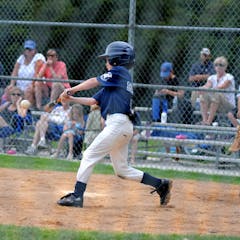
Articles on youth sport
Displaying all articles

A focus on sporting success can compromise children’s wellbeing and safety.

We are witnessing an overdue shift towards normalizing male athletes seeking help and gradually speaking more openly and vulnerably about mental health.

Young or old, men or women. All can be at risk of concussion while playing contact sport. Here’s what we know happens in the brain.

Commotio cordis is the result of blunt trauma to the heart, and is one of the leading causes of sudden cardiac death in youth sports. Improvements in protective equipment may help prevent it.

Banning young athletes from the Olympics would mean we miss their spectacular performances, but considering all we know about overtraining, exploitation and abuse in sport, that might be OK.

As smartphone uptake and connectivity grows in Africa, so does the often unhealthy trend of young people betting on sports using their phones.

Supporting one’s child on a sports team isn’t always a walk at the ballpark. Parents face complex demands that require a repertoire of skills that are rarely discussed or taught.

The New South Wales government has come in for heavy criticism over its $2 billion plan to knock down and rebuild two of Sydney’s largest sports stadiums.

The first step in reviving a lost sporting culture is to involve young Australians in working out why sport has lost its appeal and how to reverse the decline in youth participation.

The relationship between commercialised sport and junior sport has largely been left to the periphery of Australian sporting analyses.

There is much work to do if Australia is to eradicate various barriers to participation in sport.

Child sport success relies on having a positive parental influence.

In their hearts, everyone associated with the AFL knows the decline in the community is real.

Many clubs sign players as young children and make them agree to not play anything else. The evidence suggests they’re making a big mistake.
